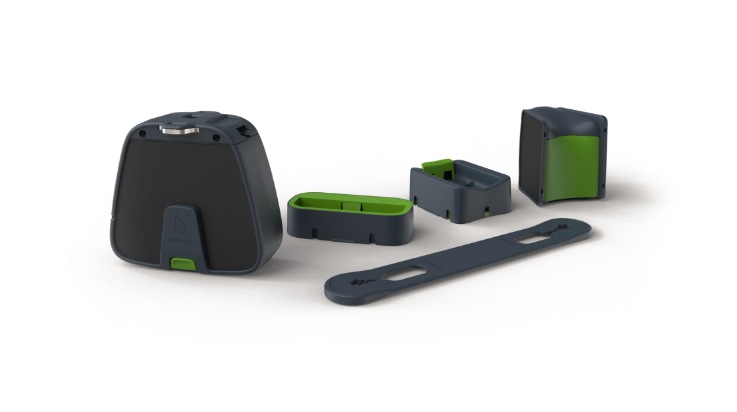The Herd Instinct and How It Affects Virtual Fencing
Nofence offers farmers a reliable virtual fencing solution for livestock. It effectively contains the herd within the virtual boundaries.
Virtual fencing may seem like magic at first. However, our research shows that the understanding gained by one individual quickly spreads to another, and in the end, is known to the whole herd.
Each animal doesn't need to check where boundary is located, the herd hears the sound when it plays from one collar. When one turns around on that sound, the rest learns to do the same.
A herd’s default instinct is to stay together. It affects both how they learn to respect the boundaries and how they behave if one or more of them escape.
A well trained herd will respect the virtual Nofence boundary, and respond to the audio cues before a pulse is applied. You can learn more about this below.
Herd Dynamics
We are often asked: “Can I just collar the leaders of the herd?” or “Could I collar half of them?”
We understand that for many, this is a significant investment — and it’s natural for farmers to look for ways to reduce costs.
However, there are good reasons why we ask that all mature livestock in a single herd are collared. The most important is animal welfare. Collaring the whole herd greatly reduces the number of pulses delivered and positively shapes how the animals respond to boundaries.
- If some animals in the herd aren’t collared, they can move beyond the virtual boundary — and the collared ones are likely to follow, even if it means ignoring the audio warning or pulse.
- When an individual crosses the virtual boundary, its instinct will always be to return to the herd. In very small herds, this effect is reduced. Those still within the boundary may end up following the ones that have wandered.
- The size of the herd also affects how quickly they learn the system. Cattle, sheep, and goats learn from each other — both by interacting with the boundary themselves and by observing the herd’s actions and reactions. In smaller groups, this learning effect is also limited.
These herd behaviours are essential for successful use of any virtual fencing. To support that, we set a lower limit on herd size: five adult animals, all of which must be collared.
Smallest Permitted Herd Size
To make the most of the herd’s natural learning and their instinct to stay together, Nofence requires that virtual fencing is only used with herds of at least five adult animals.
This is also why our minimum order size is five collars.
Please note: this lower limit applies per herd, and per type of livestock. If you plan to use Nofence for both cattle and sheep or goats, you’ll need to order at least five collars for each collar type.
Sign up to get updates, tips, and stories from farmers using Nofence.

